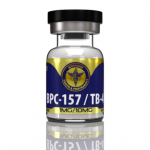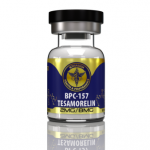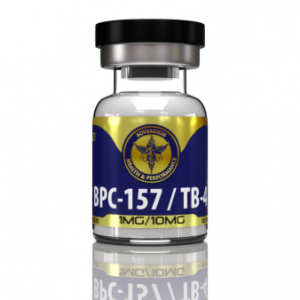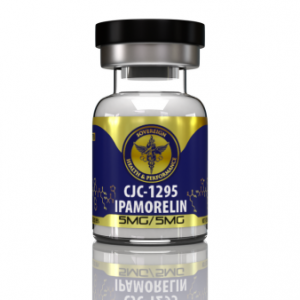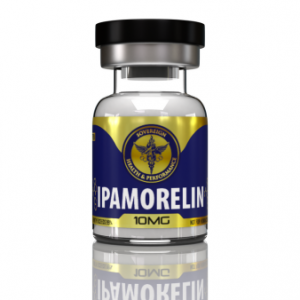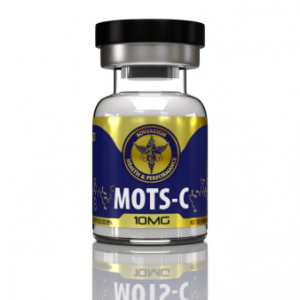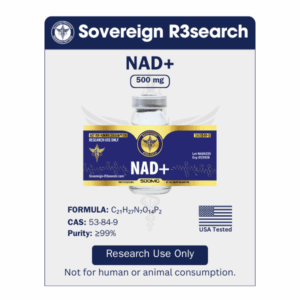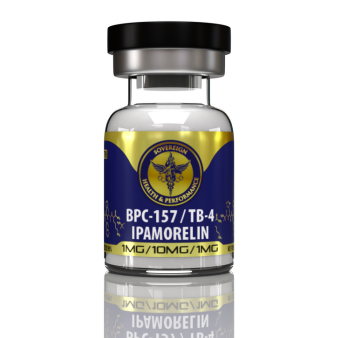
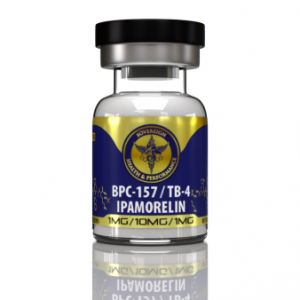
BPC-157 & TB-4 & Ipamorelin Blend
$129.00 Original price was: $129.00.$109.00Current price is: $109.00.
Research Only Purposes
- Description
- Quality Documentation
- Additional information
Description
Synergistic Peptide Research: BPC-157, Thymosin Beta-4, and Ipamorelin
Executive Summary
The combination of BPC-157, Thymosin Beta-4 (TB-4), and Ipamorelin represents an advanced area of preclinical peptide research exploring tissue regeneration, angiogenesis, cell migration, and growth hormone (GH)-mediated repair.
While BPC-157 and TB-4 support local, structural, and cellular recovery, Ipamorelin adds systemic endocrine synergy by stimulating natural GH pulses without the cortisol, prolactin, or desensitization effects often seen with older GH secretagogues.
Together, this trio forms a multi-axis regenerative platform—repairing tissue, enhancing cell mobility, restoring vascular supply, and maintaining the hormonal environment that supports sustained recovery.
1. Tissue Regeneration and Structural Repair
BPC-157 promotes regeneration across multiple tissue types—including muscle, tendon, ligament, and epithelium—by activating fibroblasts, modulating VEGF and FGF signaling, and increasing collagen deposition.
TB-4 complements this by accelerating cell migration and cytoskeletal reorganization, allowing repair cells to reach injury sites more efficiently.
Ipamorelin, as a selective GH secretagogue, indirectly supports these effects by enhancing systemic protein synthesis and collagen turnover through pulsatile GH release and IGF-1 activation.
Together, they create a “top-down and bottom-up” repair loop:
-
BPC-157 and TB-4 rebuild locally, guiding angiogenesis and matrix formation.
-
Ipamorelin enhances systemic anabolic signals, ensuring a favorable hormonal environment for repair.
References:
-
Sikiric P, et al. Body Protection Compound (BPC-157) and the healing of muscle, tendon, and ligament injuries. Curr Pharm Des. 2020;26(24):2781–2796.
-
Goldstein AL, et al. Thymosin beta-4: a multifunctional tissue repair and regeneration peptide. Ann N Y Acad Sci. 2012;1269(1):92–97.
-
Svensson J, et al. Ipamorelin stimulates GH release in humans without effects on prolactin, cortisol, or ACTH. J Clin Endocrinol Metab. 1998;83(2):362–369.
2. Angiogenesis and Microvascular Healing
Angiogenesis—the growth of new blood vessels—is essential for oxygen and nutrient delivery to regenerating tissue.
-
BPC-157 enhances endothelial cell survival, upregulates VEGFR2, and promotes nitric oxide synthesis.
-
TB-4 increases endothelial migration and tubule formation.
-
Ipamorelin supports this environment indirectly by raising GH and IGF-1 levels, both potent pro-angiogenic factors.
The combined mechanism results in faster vascularization and nutrient perfusion, which are key determinants of healing velocity.
References:
4. Staresinic M, et al. The influence of BPC 157 on blood vessel function and angiogenesis. J Physiol Pharmacol. 2003;54(Suppl 1):191–203.
5. Malinda KM, et al. Thymosin beta-4 stimulates directional migration of endothelial cells and promotes angiogenesis. J Cell Sci. 1997;110(Pt 15):2081–2089.
6. Colao A, et al. Growth hormone and angiogenesis: clinical and experimental evidence. Endocrine. 2004;25(1):73–79.
3. Cellular Migration and Cytoskeletal Coordination
TB-4 governs the actin cytoskeleton, controlling G-actin polymerization and enabling fibroblasts, keratinocytes, and endothelial cells to migrate toward damaged regions.
BPC-157 appears to enhance tenocyte and fibroblast migration via focal adhesion kinase (FAK) and paxillin activation.
Ipamorelin, by restoring GH/IGF-1 activity, indirectly enhances the cellular responsiveness to local repair signals, allowing faster alignment and organization of newly formed tissue.
This triad enhances both directional cell movement and biochemical signaling, improving coordination between structural and metabolic repair.
References:
7. Huff T, et al. Thymosin beta-4 is involved in cytoskeletal reorganization and cell migration by regulating actin polymerization. Ann N Y Acad Sci. 2002;979:123–132.
8. Chang CH, et al. BPC 157 promotes tendon fibroblast outgrowth and cell survival under stress conditions. J Orthop Res. 2019;37(9):2056–2065.
9. Sonntag WE, et al. GH and IGF-1 modulation of gene expression in tissue repair and regeneration. J Gerontol A Biol Sci Med Sci. 2005;60(7):866–875.
4. Growth Hormone Axis and Anabolic Synergy
Unlike older GH secretagogues such as GHRP-6 or Hexarelin, Ipamorelin selectively stimulates GH through ghrelin receptor activation without elevating cortisol or prolactin.
This makes it suitable in research exploring prolonged GH pulse restoration—enhancing repair while minimizing desensitization.
When paired with BPC-157 and TB-4, both of which influence the GH/IGF-1 axis locally:
-
BPC-157 has been shown to upregulate GH receptor density and modulate IGF-1 binding during healing.
-
TB-4 improves local responsiveness to GH and FGF signals, promoting connective-tissue remodeling.
-
Ipamorelin amplifies the hormonal “signal,” ensuring that the local peptides’ effects have full systemic support.
This synergy results in a balanced anabolic-regenerative environment: structure, signal, and systemic recovery all progressing together.
References:
10. Vukojevic J, et al. BPC 157 modulates the GH/IGF-1 axis during healing processes in rats. Growth Horm IGF Res. 2018;41:10–17.
11. Sosne G, et al. Thymosin beta-4 promotes corneal epithelial cell migration and modulates growth factor signaling pathways. Exp Eye Res. 2004;78(6):1137–1143.
12. Svensson J, et al. Selective GH secretagogue Ipamorelin: endocrine and metabolic characteristics in humans. Eur J Endocrinol. 2000;143(4):493–501.
5. Inflammation Modulation and Recovery Kinetics
Chronic inflammation impairs regeneration by preventing the transition to the remodeling phase.
-
BPC-157 stabilizes inflammatory mediators and nitric oxide balance, showing organ-protective effects in rodent models.
-
TB-4 downregulates IL-6 and TNF-α and promotes M2 macrophage polarization (the pro-healing phenotype).
-
Ipamorelin, through improved GH/IGF-1 signaling, supports anti-inflammatory gene expression and tissue remodeling.
Together, the tri-peptide combination may help accelerate resolution of inflammation and enhance functional recovery rates in preclinical models.
References:
13. Seiwerth S, et al. BPC 157 as a modulator of inflammation and pain pathways. Curr Pharm Des. 2020;26(24):2797–2810.
14. Sosne G, et al. Thymosin beta-4 modulates inflammatory cytokines and accelerates wound healing. FASEB J. 2002;16(6):737–739.
15. Svensson J, et al. Ipamorelin modulates GH and IGF-1 without affecting ACTH or cortisol, supporting tissue recovery without stress-axis activation. J Clin Endocrinol Metab. 1998;83(2):362–369.
6. Emerging Areas of Research
Current exploratory research is investigating potential combined applications of these peptides in:
-
Chronic musculoskeletal injuries (tendinopathy, ligament repair)
-
Cardiac and vascular regeneration (TB-4 and BPC-157 synergy)
-
Age-related anabolic decline (GH pulse restoration via Ipamorelin)
-
Neuroprotection and CNS repair, where BPC-157 and GH signaling converge
Early findings suggest that this multi-axis combination may outperform isolated use by addressing both local tissue microenvironment and systemic regenerative signaling.
References:
16. Jelovac N, et al. BPC 157 and the central nervous system: Neuroprotection and repair after trauma. Acta Pharmacol Sin. 2021;42(9):1417–1427.
17. Bock-Marquette I, et al. Thymosin beta-4 activates integrin-linked kinase and promotes cardiac cell migration after injury. Nature. 2004;432(7016):466–472.
18. Svensson J, et al. Ipamorelin restores pulsatile GH secretion and maintains normal IGF-1 without prolactin or cortisol elevation. Eur J Endocrinol. 2000;143(4):493–501.
BPC-157 & TB-4 & Ipamorelin Blend Quality Documentation
BPC-157 & TB-4 & Ipamorelin Blend 3rd Party Quality Documentation
Additional information
| CAS | 137525-51-0, 170851-70-4, 77591-33-4 |
|---|---|
| MG | 1/10/1 |
| Brand | Sovereign Health and Performance |


